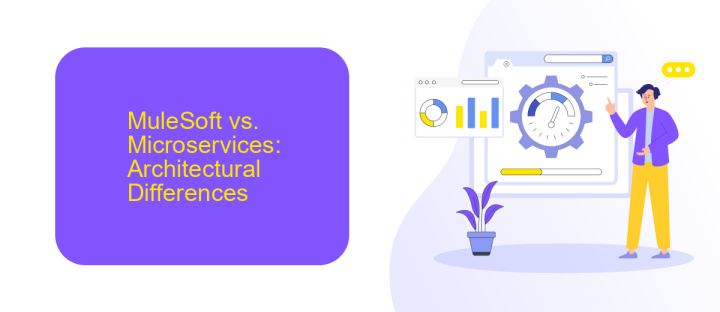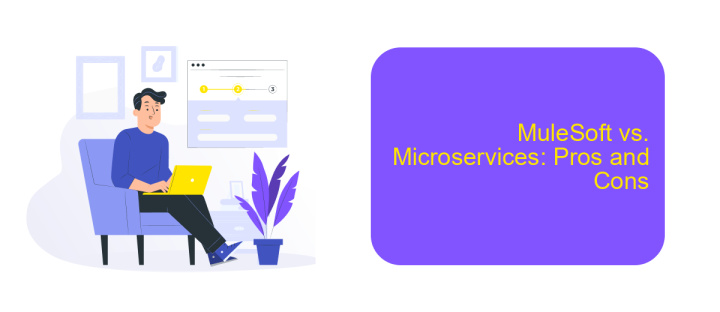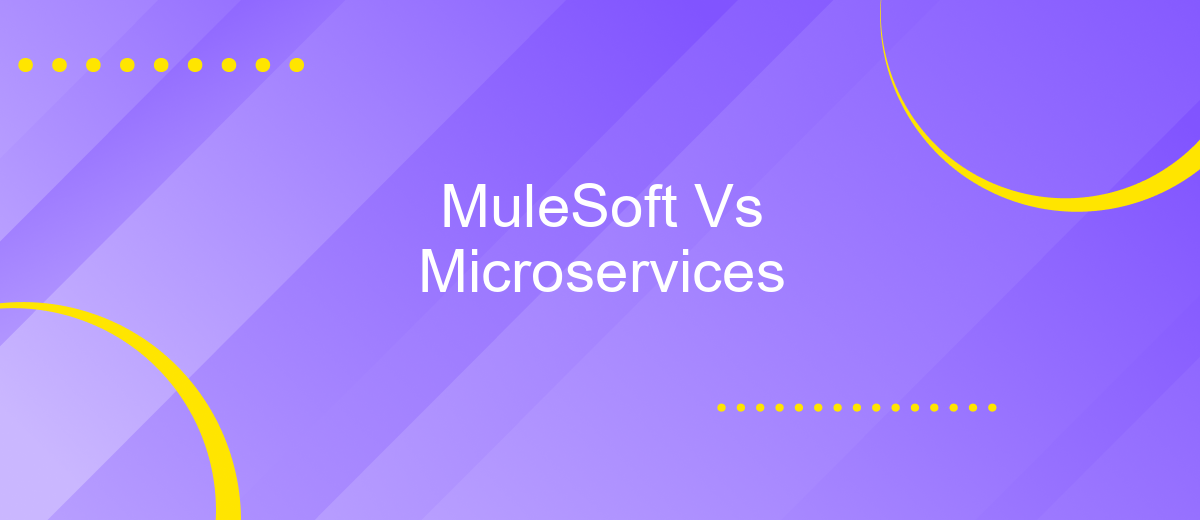MuleSoft Vs Microservices
In today's rapidly evolving tech landscape, businesses are constantly seeking efficient ways to streamline their operations and enhance scalability. This article delves into the comparison between MuleSoft and Microservices, two pivotal technologies that offer distinct approaches to integration and service-oriented architecture. By examining their features, use cases, and benefits, we aim to provide clarity on which solution best fits your organizational needs.
Introduction
In today's rapidly evolving technological landscape, businesses are increasingly relying on advanced integration solutions to streamline their operations. Two prominent approaches that have gained significant traction are MuleSoft and Microservices. Both offer unique advantages and cater to different needs, making it crucial for organizations to understand their distinctions and benefits.
- MuleSoft: A comprehensive integration platform that connects various applications, data sources, and APIs seamlessly.
- Microservices: An architectural style that structures an application as a collection of loosely coupled services, each serving a specific business function.
Choosing between MuleSoft and Microservices depends on various factors, including the complexity of your IT environment, scalability requirements, and specific business objectives. Additionally, leveraging integration services like ApiX-Drive can further enhance your integration capabilities by providing a user-friendly interface and automating data workflows between different systems. Understanding these options will empower you to make informed decisions and optimize your integration strategy.
MuleSoft vs. Microservices: Architectural Differences

MuleSoft and microservices represent two distinct architectural paradigms. MuleSoft is an integration platform that enables seamless connectivity between various applications, data, and devices. It provides a unified solution for API management, data integration, and service orchestration. MuleSoft's architecture is centralized, focusing on creating and managing APIs that act as bridges between disparate systems. This centralization simplifies integration and reduces the complexity of managing multiple endpoints, making it ideal for organizations looking to streamline their IT ecosystems.
In contrast, microservices architecture breaks down applications into smaller, independent services that can be developed, deployed, and scaled independently. Each microservice is responsible for a specific business function and communicates with other services through lightweight protocols. This decentralized approach enhances flexibility, scalability, and resilience. However, it also introduces complexity in managing inter-service communication and data consistency. Tools like ApiX-Drive can be invaluable in this context, offering automated integration solutions that help synchronize data and workflows across various microservices, thereby reducing the operational overhead and improving efficiency.
MuleSoft vs. Microservices: Functionality Comparison

When comparing MuleSoft and Microservices, it's essential to consider their core functionalities. MuleSoft is an integration platform that allows businesses to connect applications, data, and devices with ease. It provides a unified platform for API management, design, and analytics, making it a powerful tool for seamless integration.
- Integration Capabilities: MuleSoft excels in integrating various systems, including legacy systems, cloud applications, and databases, through its Anypoint Platform.
- Scalability: Microservices architecture allows for independent scaling of services, ensuring that each component can be scaled according to its needs.
- Flexibility: Microservices offer greater flexibility by enabling developers to use different technologies and languages for different services.
- Maintenance: MuleSoft simplifies maintenance with its centralized management and monitoring tools, while microservices require individual monitoring and updates.
ApiX-Drive can be a valuable addition to both MuleSoft and Microservices setups. It automates data transfer between different systems, enhancing the integration capabilities of MuleSoft and simplifying the data flow in a microservices architecture. By leveraging ApiX-Drive, businesses can achieve more efficient and streamlined operations.
MuleSoft vs. Microservices: Pros and Cons

MuleSoft and Microservices are both powerful tools for modern software architecture, but they serve different purposes and come with their own sets of advantages and disadvantages. MuleSoft is an integration platform that simplifies the connection of various applications, data, and devices, making it easier to manage APIs and data flows. Microservices, on the other hand, break down applications into smaller, independent services that can be developed, deployed, and scaled individually.
One of the main benefits of MuleSoft is its ability to streamline integrations through a unified platform, which can be particularly useful for businesses looking to connect multiple systems quickly. This is where services like ApiX-Drive come in handy, offering automated integrations that save time and reduce manual work. Microservices offer the advantage of flexibility and scalability, allowing organizations to deploy updates and new features without affecting the entire system.
- MuleSoft Pros: Simplifies integrations, comprehensive API management, and robust data flow capabilities.
- MuleSoft Cons: Can be complex to set up, requires specialized knowledge, and may be overkill for smaller projects.
- Microservices Pros: High flexibility, independent scaling, and easier fault isolation.
- Microservices Cons: Can lead to increased complexity, requires robust monitoring, and potential for higher latency.
In summary, the choice between MuleSoft and Microservices depends largely on your specific needs. MuleSoft is ideal for businesses needing streamlined integration solutions, while Microservices are suited for those requiring flexibility and independent scalability in their applications.
Choosing Between MuleSoft and Microservices
Choosing between MuleSoft and Microservices largely depends on your organization's specific needs and existing infrastructure. MuleSoft is an integration platform that simplifies connecting different systems, applications, and data sources, making it ideal for businesses looking to streamline their integration processes without extensive custom development. On the other hand, Microservices architecture breaks down applications into smaller, independent services that can be developed, deployed, and scaled individually, offering greater flexibility and resilience.
If your primary goal is to manage and automate integrations efficiently, MuleSoft or a similar service like ApiX-Drive could be more suitable. ApiX-Drive, for instance, offers a user-friendly interface and pre-built connectors to integrate various applications seamlessly. However, if you require a more granular control over your application's components and the ability to scale specific services independently, adopting a Microservices approach might be the better choice. Ultimately, the decision should align with your business objectives, technical capabilities, and long-term scalability plans.
FAQ
What is the primary difference between MuleSoft and Microservices?
Can MuleSoft be used to manage Microservices?
Is it necessary to use an integration platform like MuleSoft for Microservices?
How does MuleSoft handle data integration in a Microservices architecture?
What alternatives exist for integrating Microservices besides MuleSoft?
Time is the most valuable resource in today's business realities. By eliminating the routine from work processes, you will get more opportunities to implement the most daring plans and ideas. Choose – you can continue to waste time, money and nerves on inefficient solutions, or you can use ApiX-Drive, automating work processes and achieving results with minimal investment of money, effort and human resources.

